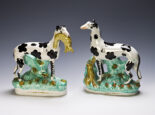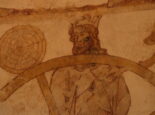Winter wonderland
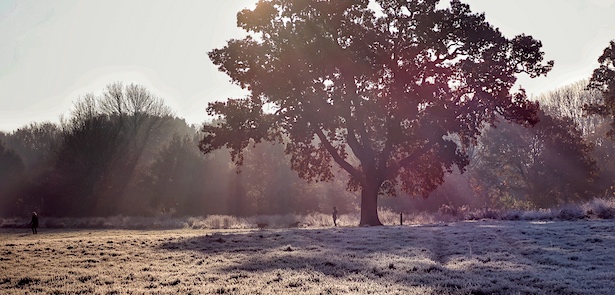
Nene Park is a special place to visit at any time of year and winter’s no exception, with the pared-back beauty of the Park clear to see. But while we wander at our leisure, it’s all hands on deck behind the scenes to ready the Park for next year, as Park Manager Greg Higby explains
 Winter is the time of year when nature slows down and a lot of wildlife hunkers down till spring. But this is one of the busiest times of year for Nene Park’s Rangers and volunteers…
Winter is the time of year when nature slows down and a lot of wildlife hunkers down till spring. But this is one of the busiest times of year for Nene Park’s Rangers and volunteers…
We divide our annual workload into a summer and a winter work programme. It’s a spreadsheet that all departments feed into. Because the task list can be very long we have to categorise tasks into high, medium and low. We can never get through them all in one season because there’s just so much to do! Of course, if something has been on the list for a while, we will move it up the priority list. Everything gets done eventually.
So what will be keeping you busy this winter?
Our winter programme begins with tree remedial work. The trees in the Park are surveyed every year by a specialist who then sends us all the recommended works arising from that. This then joins our list of ongoing general tree work in our woodland areas. Once the tree work is completed it’s on with the hedge cutting and flailing right around Nene Park, which includes the wider estate. Then after that it’s whatever routine tasks need to be done to get everything ready for the new season – for example footpath repairs, installing and repairing benches and signage, hanging up or cleaning nest boxes, and new tree planting. There’s a lot that goes into keeping Nene Park looking good, which includes a thorough end-of-season tidy up. For example, we’ll head down to Orton Mere where as well as getting the hedges cut, we will tidy up the car park. The same with Thorpe Meadows and so on. We want everywhere to look its best for the new season.
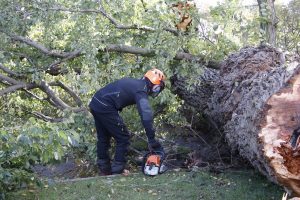 Tell us more about all the tree work you do. What does that involve and what determines if something is cut?
Tell us more about all the tree work you do. What does that involve and what determines if something is cut?
Most of the tree work is carried out for public safety. The tree surveys might highlight some deadwood or a tree collar that is deemed unsafe and needs removing. The other side to this work is our woodland management plan put together in partnership with the Forestry Commission. It’s a five-year plan that outlines a schedule of tree thinning, restocking and coppicing – where young trees are repeatedly cut to ground level to provide additional wildlife habitat. Once all that’s done, we will go through and replant as necessary. All of the tree species we plant have wildlife value. That’s very important to us. So a tree might produce good groundcover or perhaps fruits and berries for the birds. We try to plant a mix of different species, sticking to local provenance whenever possible. Some of the work that comes up is reactive stuff. For example, we had to fell the elm trees in front of the Visitor Centre this autumn because they were riddled with Dutch elm disease. They had done really well, but sadly they were dying and we couldn’t leave them any longer. We will get the stumps ground down and then replace them with new hybrid varieties of elm that are very resistant to the disease. We’re keen to put elms back in because they are part of the Park’s history.
Having such a large area of land under your management carries a significant workload but something you’ve mentioned in the past is that it also presents an opportunity to offset some of the carbon emissions arising from the Trust’s work, right here on site.
That’s correct. Normally, if we take one tree down, we will always aim to replace it with five new trees, often more. The plan is to put in as many trees as possible to offset as much carbon as we practically can. Of course, we never fell trees for the sake of it – they are normally only felled because of poor health or when a tree has reached the end of its life.
What about all the timber and deadwood arising from all this work?
We create deadwood habitat piles around the park. There are lots of them! They are great for wildlife such as insects, fungi, mosses and lichens. Birds then feed on these insects, so it helps to support wildlife further up the food chain too. If we have to take material away but can get away with stacking it somewhere else, we will. Our team is encouraged to do this and they are very keen to do it anyhow. The habitat piles are usually found in and around the woods.
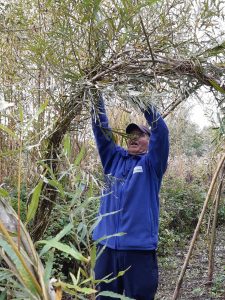 You’ve got a fantastic group of volunteers too. Where do they come in, and how important are they to the winter works programme?
You’ve got a fantastic group of volunteers too. Where do they come in, and how important are they to the winter works programme?
They are heavily involved with the Park management team. They do a lot of hedge cutting for us and a lot of tidying up. They may also be involved with activities such as hedge laying and tree planting. In fact, there’s a small group of them down at Orton Mere right now, giving the area its end-of-season tidy up. We can’t let the volunteers loose with the hedge cutters, so they do a lot of this work by hand – and they do a really thorough job of it. The volunteers are an invaluable workforce for Nene Park Trust and I can’t thank them enough for the work they do.












